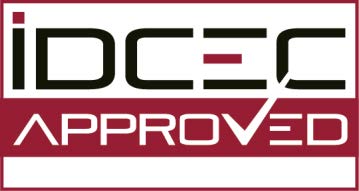
Easy Care and Rarely Clean Surfaces
-
You must log in to register
- Guest - $59
- ASID Member - Free!
Gain insight into new technologies that enable materials to maintain a high level of surface quality and surface cleanliness despite repeated and sometimes heavy use.
Continuing Education Approval
- 1 IDCEC CEU | CC-119721 (Your CEU will be reported to IDCEC on your behalf.)
Description
Dr. Andrew Dent of Material ConneXion will cover cutting-edge developments in non-porous and ultrahard surfaces, omni-phobic coatings, anti-microbial treatments, and improved color retention in materials for use in interior and outdoor spaces. You’ll learn about real-world applications of these technologies and how to use the new materials in your work when you’re looking for the most durable surfaces.
Learning Objectives
- Achieve an understanding of four different types of easy care/rarely clean surfaces, including non-porous and ultra-hard, omni-phobi coatings, anti-microbial treatments and better color retention in materials, and how they can be used in various applications.
- Become familiar with the different ways that an easy clean/rarely clean surface can be achieved depending upon the type of surface considered.
- Gain insight into technologies that enable materials to maintain a high level of surface quality and surface cleanliness despite repeated and sometimes heavy use.
- Identify the difference between omni-phobic, hydrophobic, super-hydrophobic, and oleophobic properties.
Access period: One year from registration date.

Andrew Dent, Ph.D.
Executive Vice President of Research, Material ConneXion
Dr. Andrew Dent is Executive Vice President of Research at Material ConneXion, and Chief Material Scientist at SANDOW. He plays a key role in the expansion of Material ConneXion’s technical knowledge base. His research directs the implementation of consulting projects and the selection of innovative, sustainable and advanced materials to Material ConneXion’s library, which currently houses over 8,000 material samples. Since joining Material Connexion, Dr. Dent has helped hundreds of clients—from Whirlpool and Adidas to BMW and Procter & Gamble—develop or improve their products through the use of innovative materials. A leading expert on sustainable materials, his insight has played an important part in creating a new generation of more sustainable products. He is a frequent speaker on sustainable and innovative material strategies and is the co-author of the Material Innovation books series, which, to date, includes Material Innovation: Architecture, Material Innovation: Product Design and Material Innovation: Packaging Design. Dr. Dent has also contributed to many magazines including Business Week, Fast Company and the Financial Times.

This CEU is registered with the International Design Continuing Education Council (IDCEC) for continuing education credits. This credit will be accepted by the American Society of Interior Designers (ASID), International Interior Designers Association (IIDA) and Interior Designers of Canada (IDC).
The content included is not deemed or construed to be an approval or endorsement by IDCEC of any material or construction or any method or manner of handling, using distributing or dealing in any material or product.
Questions related to specific materials, methods and services should be directed to the instructor and provider of the CEU.
This program is registered for 1 CEU value. The IDCEC class-code is: CC-119721.
